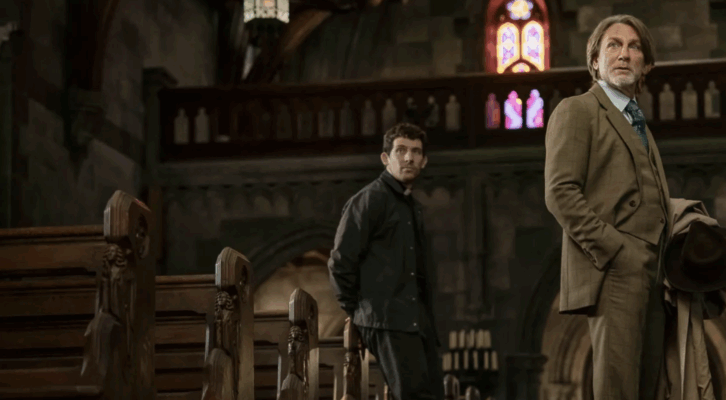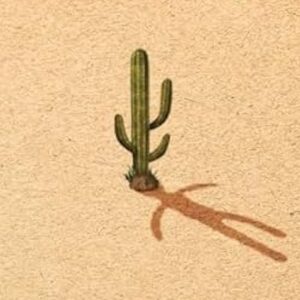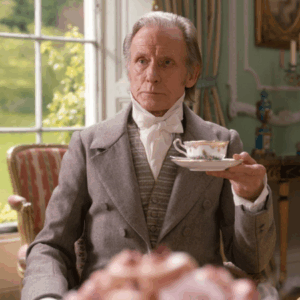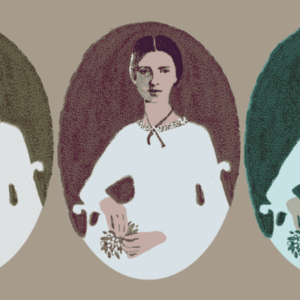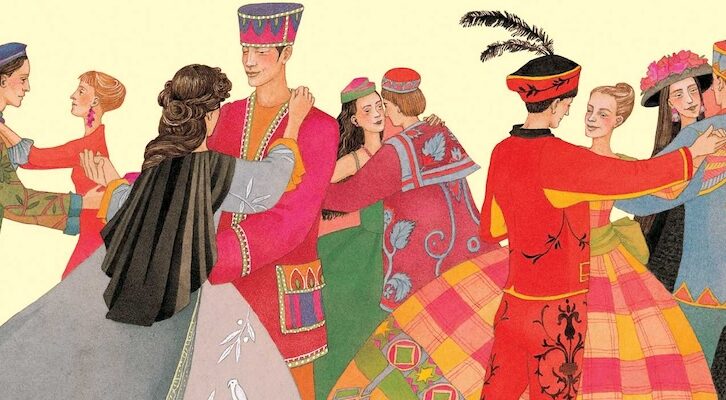
Sibling Duos, Trios, Quartets, and More: Nine Stories and Folktales Featuring Sisters
Fran Littlewood Recommends Alison Espach, Katherine Mansfield, the Brothers Grimm, and Others
Something a little strange happened when I started writing The Accidental Favorite, a book about three adult sisters. Something deep-rooted, unconscious, potent, that began to seep into the pages.
Like a kind of enchantment, I found myself pulled back into a world of stories from my childhood—a visceral connection to the bent cardboard corners of the book covers, the otherworldly illustrations, the astonishing magic conjured in decoding the simple printed words. A revisiting of narratives, of folklore and fairytales, about siblinghood.
And a new reckoning with just how many of those early stories—from Charles Perrault’s Cendrillon to Giambattista Basile’s “The Three Sisters,” to Grimms’ “God’s Food,” and the Scottish “Molly Whuppie“—pit sisters one against the other.
As one of three sisters myself, and having three daughters (in fairytale-worthy fashion…), it was exactly this kind of reductive comparison—this ranking of groups of girls and women—that had led me to write a book about sisters in the first place.
I saw so many parallels between the way I felt my sisters and I were compared growing up (by family friends, teachers, boyfriends…) because we came as a set, a three, and the kind of scrutiny I was seeing young women—my daughters—subjected to. The same pernicious appraising, but exacerbated to the nth degree by social media. No surprise for a culture borne out of the precursor to Facebook, a system developed to rate the relative “hotness” of young women.
As part of a broader commentary on womanhood, I decided I’d subject my fictional sisters to what must surely be the most damaging comparison, a modern-day taboo. So the novel opens with three generations of the Fisher family, gathering in a remote glass house in the English countryside, for what they hope will be an idyllic week’s holiday—only for Patrick, the father of sisters Alex, Nancy and Eva, to inadvertently reveal that he has a favorite….
It’s maybe because of this personal/ political dimension that stories about sisters have always been catnip to me. As far as I’m concerned, you can never have too many sisters in a novel—the more the merrier—and here, in small homage, is a scratch-the-surface list of books I’ve loved (and distracted myself hugely in rereading for this article), featuring sisters in various multiples. If you haven’t read them, do so!
*
Sister Duos

Alison Espach, Notes On Your Sudden Disappearance
Sally Holt worships her older sister Kathy. Kathy is a green person, who “wore a string bikini to the pool and said things like, ‘Nudity is what you make of it….In Europe, people are naked all of the time and nobody cares.'” Meanwhile Sally, ignored by her classmates, and known at school as “Sally two vaginas,” is a “rational, sensible, reliable” red person, which is obviously “not good.”
Told in the second person – a love letter from a younger sister to an older – this incredible novel, from the author of The Wedding People, explores how absence can be the biggest presence. It’s also an entirely original love story that will grip your heart. Soul piercing, fiercely human and darkly funny, it’s impossible to do the book justice here, just read it, read it, read it—and thank me later.

Katherine Mansfield, “The Daughters of the Late Colonel” from The Garden Party
Virginia Woolf wrote in her diary, of modernist short story writer Mansfield, “I was jealous of her writing—the only writing I have ever been jealous of.” And this tragicomic tale of two unmarried sisters, is considered one of the New Zealand author’s finest. It’s a nuanced, unsettling story, that’s less about what’s said than what isn’t, as the sisters’ desires stutter into the light following the death of their domineering father.
As spikily humorous as it is poignant, sisters Josephine and Constantia are at a loss as to how to proceed with their lives, which until now, have been entirely given over to the service of the colonel. “And suddenly, for one awful moment, she nearly giggled,” Mansfield writes of Josephine. “The giggle mounted, mounted; she clenched her hands; she fought it down; she frowned fiercely at the dark and said ‘Remember’ terribly sternly.”

Brit Bennett, The Vanishing Half
An extraordinary exploration of sisterhood, identity, and race, The Vanishing Half tells the story of identical twins, Stella (“the clever one”) and Desiree (“a selfish girl”) who, aged sixteen, run away from the Southern black community where they’ve grown up—only for their paths to diverge dramatically. “[T]he twins scattered, their lives splitting as evenly as their shared egg. Stella became white and Desiree married the darkest man she could find.”
Years later, Stella is still keeping the secret of who she is from her husband and child, while Desiree returns with her daughter to the town “she couldn’t wait to leave.” But although estranged, the past weighs heavy as history on the sisters, who find they’re linked by bonds they can’t escape.
Bennett takes a scalpel to notions of selfhood and longing, loss and love, in a novel that’s as wildly compelling as it is seductively lyrical.

Hannah Pittard, We Are Too Many: A Memoir (Kind of)
Described as “A Memoir (kind of),” this genius, genre-defying book blurs fact with fiction to brilliantly explosive and quietly devastating effect. A reconstruction of the breakdown of the author’s marriage, following her husband’s affair with her best friend, Pittard fills in the blanks creatively—detailing calls and meetings between the two, as she imagines they might have happened.
But it’s the Fleabag-esque relationship between the author and her sister, that’s a breakout star of the book for me. In caustic exchanges, which pulse with unconditional love, the sisters riff on everything from a lacklustre suicide attempt to their grandpa’s porn stash, usually both validating and invalidating one another in a single pitch-perfect encounter. Raw, irreverent and funny as hell, this is a slim volume that punches powerfully.
*
Sister Trios

Sunjeev Sahota, China Room
Sahota had me from the first sentence of this twisted fairytale of a novel, setting up his compelling premise in a single line, “Mehar is not so obedient a fifteen-year-old that she won’t try to uncover which of the three brothers is her husband.”
Opening in rural Punjab in the summer of 1929, the story centers around three sisters-in-law, married in the same ceremony to three brothers, but kept in the dark (literally in the “pitch black” when the brothers visit at night to exercise their conjugal rights) about whose husband is whose. “Sisters together” in the face of their fears and desires, the three young women sleep “squeezed two to a bed” in the china room, a cramped outhouse named for the set of six willow pattern plates from the dowry of their odious mother-in-law.
Through this story of sisterhood, Sahota weaves the tale of one of Mehar’s descendants who, many decades later, flees to India to battle his own demons. It’s a book about oppression and resilience, rivalry and betrayal, freedom and love, and it will ensnare you.

Ann Patchett, Tom Lake
Chekhovian overtones are threaded through this wise and beautiful story of three twenty-something sisters “capable of a perfect communion of thought,” returned—because of the pandemic—to the Michigan cherry orchard where they grew up. A novel about selfhood and the paths we choose, the sisters persuade their mother, Lara, to tell them the story of her life before them. Of the time she fell “so wildly in love” with Peter Duke, the famous film star she once knew, and who Emily, the eldest sister, has long fantasized might be her father.
But as they harvest the cherries and Lara’s narrative unfolds, there are secrets she’s still keeping from her daughters, “the parts they’re waiting to hear are the parts I’m never going to tell them.” An exploration of the quest for contentment and the different versions of us, Lara reflects, “There was no way to foresee the mess it would come to in the end….”
Sister Quartets:

Claire Lombardo, The Most Fun We Ever Had
Sister quartets in literature have been having a moment, from Ann Napolitano’s Hello Beautiful (billed as an homage to those OG four sisters, Louisa May Alcott’s Little Women), to Coco Mellors’ Blue Sisters, and Claire Lombardo’s completely wonderful The Most Fun We Ever Had. Immersive and complex, funny and insightful, it’s one of the books I’ve recommended most to friends and family these past few years.
The novel tracks the Sorenson sisters as they move through life’s chaos in the orbit of their besotted parents. There’s Wendy, the eldest (who “was always cause for concern”), Violet, (who “made a habit of avoiding Wendy,” despite them being “practically twins“), Liza (a tenured professor at thirty-two), and Grace, the youngest by nine years (the “only only-child in the world who has three sisters”).
An astute and compassionate portrait of sisterhood, flaws and all, the dynamics between the characters are sublime.”Come in, I guess,” Wendy tells Violet in one scene. “Though, it behooves me to point out that if I ever showed up at your house uninvited you’d have me tasered.” The kind of novel that makes you fall in love with reading all over again, I did not want it to end.
*
Sister Quintets

Curtis Sittenfeld, Eligible
Pride and Prejudice made headlines this Spring, with the announcement that Dolly Alderton is to write a new adaptation for screen. Whatever her approach, it’s unlikely to be as radical as Sittenfeld’s re-telling, which catapults the five Bennet sisters into the twenty-first century.
A Clueless to Austen’s Emma, Eligible sees Jane, Lizzy, Mary, Kitty and Lydia, transposed to a ‘sprawling eight-bedroom Tudor’ in suburban Cincinnati. The book opens with Mrs Bennett plotting how her girls might meet “Chip” Bingley, a Harvard Med School graduate, who appeared on reality-TV show, Eligible, in search of a wife.
Witty, smart, and with sharp observations worthy of the original, Sittenfeld is having palpable fun throughout. Kitty and Lydia have taken up CrossFit, while Caroline Bingley texts Jane to invite her for sushi (“Just us two, none of your sisters”), and a braless “Liz” opens her apartment door to find Darcy standing there….A wickedly joyous rendition of this classic sister story.
*
A Dozen Sisters

The Brothers Grimm, “The Twelve Dancing Princesses“
The quickest of nods to this iconic fairytale, with its beguiling premise of twelve renegade sisters who sleep in twelve beds in the same locked room, and yet whose shoes are worn out each morning as though they’ve been dancing all night….
______________________________

The Accidental Favorite by Fran Littlewood is available via Holt.
Fran Littlewood
Fran Littlewood has an MA in creative writing from Royal Holloway, University of London. Before her MA, she worked as a journalist, including a stint at the Times. She lives in London with her husband and their three daughters. Amazing Grace Adams is her debut novel.











